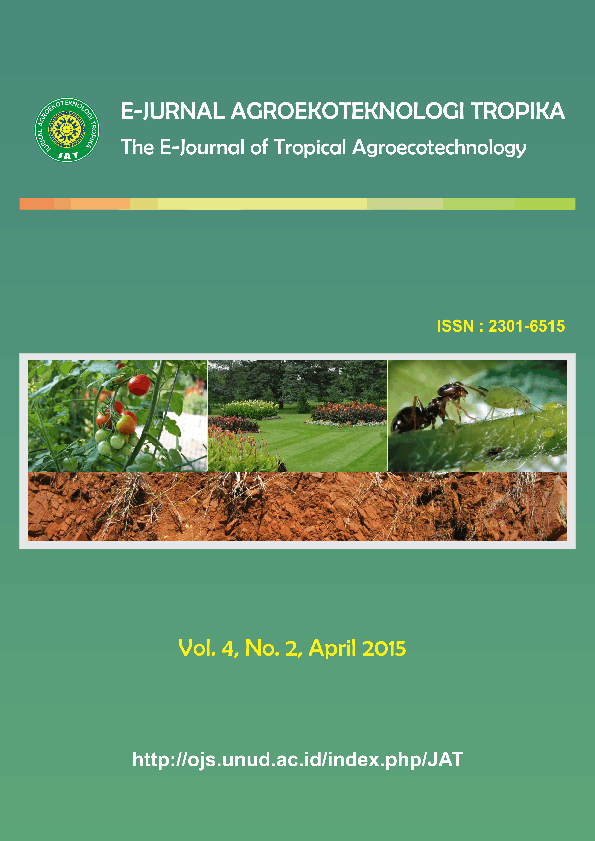Aplikasi Ekstrak Bahan Nabati Berbagai Tanaman terhadap Perkembangan Populasi dan Reproduksi Nematoda Puru Akar Meloidogyne spp. pada Tanaman Tomat (Lycopersicum esculentum Mill.)
Abstract
ABSTRACT
Application of plant extracts to control the population and reproduction of Meloidogyne spp. on tomato (Lycopersicum esculentum Mill.)
Root knot nematodes Meloidogyne spp. was one of the pests that can be a limiting in crop cultivation. Efforts to control nematodes in general performed chemically by using synthetic nematicides. Use this Nematisida can negatively impact the environment, especially when the use of nematicides is too excessive. To try to avoid it in a way that is friendly to the environment control using plant-based materials.The purpose of this study was to determine the plant extracts were able to suppress the population of Meloidogyne spp. and determine the most effective plant extracts suppress the population of Meloidogyne spp. the results showed that the nematode population in the soil of 300 g show the lowest was found in the extract treatment plant Piper betle L. is 25 head, with a percentage of 95%, followed by treatment of Carica papaya tail 28.75 (94.25%), Nicotiana tabacum tail 32.25 (93.55%), Allium sativum 49.5 tail (90.1%), Allium sativum 56.5 tail (88.7%), Riccinus tail communis 63.25 (87.35%), Datura stramonium L. 65 individuals (87%), Morinda citrifolia tail 68.28 (86.34%). To the amount of 1 g of root galls in the most tangible effect of treatment indicated by the plant extract of Piper betle L. with the average number of root knot per 1 g of root pieces with a percentage of 96.5 to 17.5%, followed by treatment of the plant Carica papaya extracts 20, 5 pieces (95.9%), Nicotiana tabacum L. 22.5 units (95.5%), Allium sativum fruit 24.5 (95.1%), Capsicum frutescens L. fruit 26.75 (94.65%), Riccinus communis fruit 28.5 (94.3%), Datura stramonium L. 30.5 units (93.9%), Morinda citrifolia L. fruit 32.25 (93.55%). root knot nematode populations in a 1 g root is: Piper betle L. plant extract with an average of 23.75 tails nematode populations with emphasis percentage (95.25%), followed by treatment of Carica papaya 26.0 tail (94.8% ), Nicotiana tabacum L. tail 28.75 (94.25%), Allium sativum tail 30.75 (93.85%), Capsicum frutescens L. 34.0 tail (93.2%), 36.75 Riccinus communis tail (92.65%), Datura stramonium L. tail 42.75 (91.45%), Morinda citrifolia L. 44.0 tail (91.2%). number of egg masses in the 1 g roots of plants treated with each treatment with the control test plant extracts showed Piper betle L. plant extracts resulted in suppression of egg masses is simply the most good 4.0 percentage points to 99.2% suppression, followed by Carica papaya 6.5 points (98.7%), Nicotiana tabacum L. 9.0 points (98.2%), Allium sativum 10.5 points (97.9%), Capsicum frutescens L. 11.75 grains (97, 65%), Riccinus communis 13.25 points (97.35%), Datura stramonium L. 15.0 points (97%), Morinda citrifolia L. 17.25grains(96.5%).
Keywords:Caricapapaya,Nicotianatabacum L., Piper betle L.Tomato plants and Meloidogyne spp.



